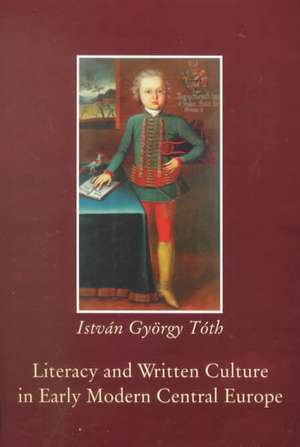Literacy and Written Culture in Early Modern Central Europe
Autor Istvan Gyorgy Tothen Limba Engleză Hardback – 2003
This unequalled volume's key value is to place Hungary on the map of European literacy rates over the whole period between the initial stimuli of Renaissance and Reformation and the developed, state-organized educational systems of the (later) nineteenth century.
Suitable for academics across a wide range of subject areas, Tth's work is a broad international comparative analysis, concentrating on the long-term development of literacy rates and the use of written and oral culture in early modern societies. Tth also examines the social history of elementary schools and its teachers, and book reading among peasants and noblemen throughout the sixteenth to nineteenth centuries in Hungary.
Literacy and Written Culture includes references to the development of libraries during the period and on the use of different languages - of particular importance is an examination of Latin usage. This volume is an extremely lively and stimulating guide providing fascinating insights into village life, legal and administrative issues and the role of the clergy. Its overall content contributes to major debates in the fields of language, literacy, linguistics and social history.
Preț: 336.66 lei
Preț vechi: 464.33 lei
-27% Nou
64.43€ • 67.02$ • 53.19£
Carte indisponibilă temporar
Specificații
ISBN-10: 9639116858
Pagini: 200
Dimensiuni: 159 x 234 mm
Greutate: 0.57 kg
Editura: CEU EDUCATIONAL SERVICE NON-PROFIT LLC
Descriere
The key aspect of this volume is to place Hungary on the map of European literacy rates over the whole period between the initial stimuli of Renaissance and Reformation and the developed, state-organized educational systems of the later 19th century. Toth's work is a broad international comparative analysis, concentrating on the long-term development of literacy rates and the use of written and oral culture in early modern societies. An examination is provided of elementarey schools and their teachers, as well as book reading among peasants and noblemen throughout the 16th to 19th centuries in Hungary.
Significant sections are included on the development of libraries during the period and on the use of different languages, particularly Latin. By way of illustration examples are taken of village life, legal and administrative issues and the clergy to contribute to major debates in the field of language, literacy, linguistics and social history.
